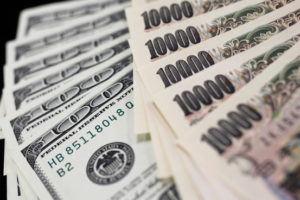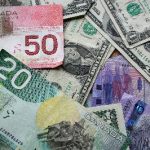 The yen advanced against the US dollar, following a report that showed the Japanese consumer prices increased more than expected in December. However, the long-term forecast for the exchange rate of the yen against the US dollar has been revised down.
The yen advanced against the US dollar, following a report that showed the Japanese consumer prices increased more than expected in December. However, the long-term forecast for the exchange rate of the yen against the US dollar has been revised down.
Having reached a session low at 102.33 at 05:00 GMT, USD/JPY traded at 102.56 GMT at 09:48 GMT, losing 0.16% for the day. Support was likely to be received at January 30th low, 102.09, while resistance was to be met at January 29th high, 103.36.
A report today revealed Japans core consumer prices increased 1.3% in December from a year earlier and after a 1.2% advance in the previous month. Analysts had expected the core consumer price index to rise 1.2%.
“Stronger CPI means bets for additional easing by the Bank of Japan will be pushed back,” said Yuji Saito, the director of foreign-exchange at Credit Agricole Corporate & Investment Bank in Tokyo, cited by Bloomberg. “That’s not supportive of yen weakness”, he added.
The yen drew support as the nations equities declined, with Topix index losing 6.3% this year, while Nikkei 225 Stock Average declined 8.5%. The regional MSCI Asia Pacific Index also fell by 4.8% this month.
However, Commonwealth Bank of Australia, the biggest lender in the country, revised down its forecast regarding the exchange rate of the yen to 119 per US dollar by the end of the year from the previous forecast of 107 yen per US dollar. The bank motivated its decision, citing Japans deteriorating balance of payments.
The Japanese Ministry of Finance reported on January 27th that the trade deficit of the nation widened to 11.5 trillion yen during the previous year, the highest on record. The Japanese trade deficit in 2013 was almost 65% higher than the previous year’s amid devaluation in the currency and energy shipments, which increased the import bill.
The yen devalued 18% against the US dollar last year, the most since 1979.
The trade data revealed that a 0.2% increase in the volume of Japans imports of Liquefied Natural Gas, resulted in a 18% increase in the value of imports.
A government report earlier in the month revealed that the nation’s current account deficit widened to a record 593 billion yen in November from a deficit of 128 billion yen in the previous month. The figure was well above analysts’ expectations of a deficit of 369 billion yen. Japan usually relies less on foreign capital as the country has an annual current account surplus since 1985.
Meanwhile, the US Department of Commerce reported yesterday that consumer spending rose by 3.3% in the fourth quarter, marking the highest advance in three years. The data was preliminary and it came after a 2% increase in the previous quarter, while analysts had expected consumer spending will rise 3.7% in Q4. Consumer spending is regarded as a crucial economic indicator as it accounts for almost 70% of the total economy.
A separate report by the US Bureau of Economic Analysis revealed the preliminary gross domestic product of the country increased 3.2% in the fourth quarter, in line with analysts’ forecasts. The US economy expanded at 4.1% in the prior three months, which was the fastest pace since the first quarter of 2010.
However, data also revealed the number of initial jobless claims for the week ended January 25th, rose by 19 000 to 348 000, exceeding analysts’ estimates of an increase to 330 000. The number of jobless claims in the previous week was upward revised to 329 000 from earlier estimates of 326 000.
Greenback’s demand continued to be supported after the Federal Open Market Committee announced on Wednesday that it will reduce the pace of its monthly bond purchases to $65 billion from the current $75 billion. The FOMC cited improvements in the labor market and the pace of the economic growth, which started accelerating in recent quarters, in consonance with its plan to gradually withdraw from bank’s unprecedented accommodative policy. The central bank has undertaken three rounds of bond purchases since 2008, known as quantitative-easing stimulus strategy.
The central bank will probably continue to pare stimulus by $10 billion at each policy meeting before exiting the program in December, according to a Bloomberg News survey of 41 economists, conducted on January 10th.
Elsewhere, AUD/USD slid to a session low at 0.8753 at 5:15 GMT, after which consolidation followed at 0.8765, losing 0.35% for the day. The pair recorded a 0.9% gain this week. Support was likely to be found at January 30th low, 0.8711, while resistance was to be encountered at January 29th high, 0.8826.





